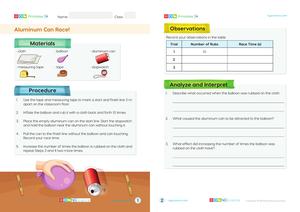Begin the lesson by discussing a common experience: receiving a small electric shock when touching a metal doorknob. This relatable example introduces the concept of electric discharge.
Go to the LessonLearning Objectives
- Understand the concept of electric discharge and its occurrence in everyday life, such as when touching a metal doorknob.
- Explain the process of static discharge and identify examples like lightning during a storm.
- Describe how electric charges move and create phenomena such as sparks, flashes of light, and thunder.
- Recognize the safety precautions to take during a thunderstorm to avoid the dangers of lightning.
Introduction and Hook
Introduce the phenomenon of lightning as a powerful example of electric discharge, setting the stage for further exploration of static discharge and electric charges.
Direct Instruction
Explain the process of static discharge using the example of walking on a carpet and touching a doorknob. Highlight how electric charges move and create sparks.
Guided Exploration
Explore the concept of electric discharge during thunderstorms. Discuss how charges build up in clouds and the ground, leading to lightning.
Hands-On Activity
Independent Practice
Check for Understanding
Discuss the safety precautions to take during a thunderstorm to avoid the dangers of lightning. Encourage students to share what they learned from the lesson and video resources.
Review and Reflection
Review key concepts of electric discharge and static electricity. Ask students to reflect on how these phenomena occur in their daily lives.
Assessment and Extension
Use the 'What Is Electricity?' assessment to evaluate students' understanding of basic electricity concepts and their practical applications.
Encourage students to take the unit quiz to test their comprehension of electric discharge and related concepts.
Try the Quiz




